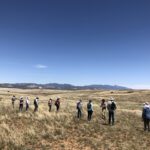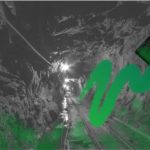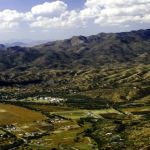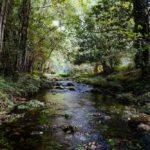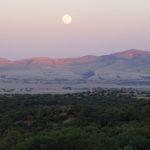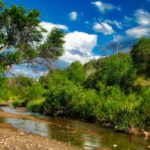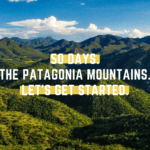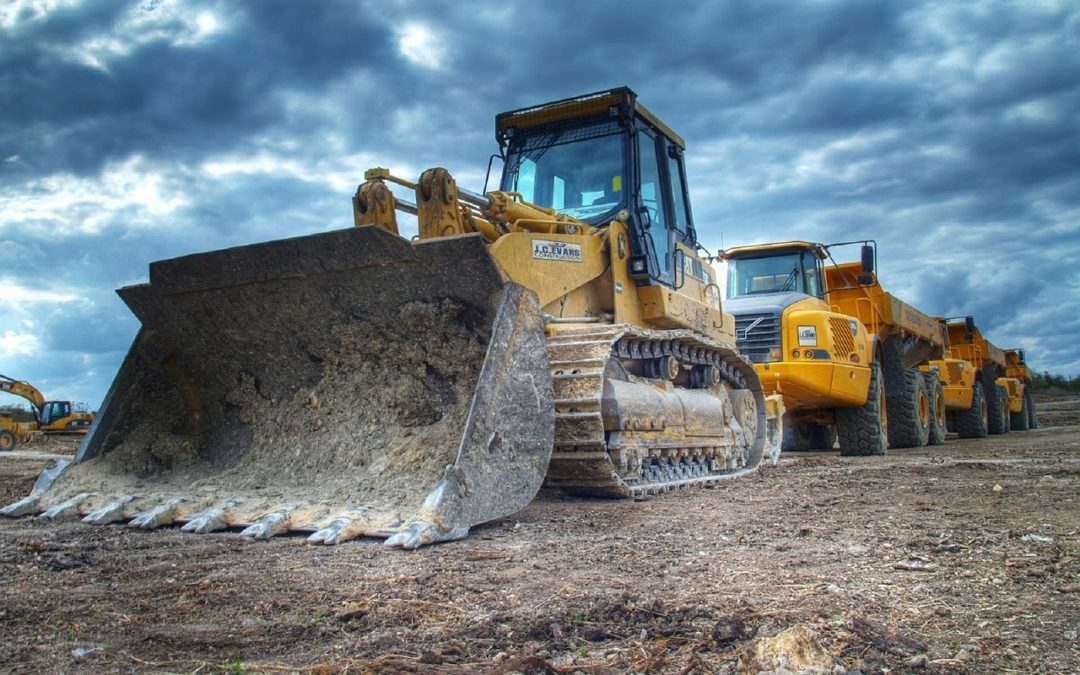
Dec 22, 2020 | Blog
One would be forgiven for being unaware of the major events of 1872, so allow us to remind you:
- Ulysses S. Grant defeats Horace Greeley to win the U.S. presidency.
- Suffragist Susan B. Anthony is served an arrest warrant for the crime of voting and fined $100.
- Yellowstone is established as the world’s first national park.
- The General Mining Act passes in an effort to encourage development in the American West.
Today, most of these things are different. President Grant is no longer in office. Women have voting rights. National parks are now enjoyed all over the world.
Yet hardrock mining still largely operates under a law written almost 150 years ago, and we are paying the price.
1872 Mining Law
150 years ago, the federal government sought to promote Western settlement by giving hardrock mining companies an offer they couldn’t refuse. Suddenly, 270 million acres of public land (about ¼ of all US land) became an incredible business opportunity.
Unlike coal, oil, and natural gas extraction, which pays a 8%-12.5% royalty, the hardrock resources like copper and gold beneath the land are nearly free to any domestic or foreign mining entity. Anyone need only discover the presence of valuable resources to stake a claim and gain mining rights on public land. Before extracting billions of dollars worth of minerals, taxpayers are owed a cost established in 1872: under $5 per acre. No, we didn’t forget a zero.
For example, in 1996 “a Canadian mining company proposed a mine at the doorstep of Yellowstone National Park. The threat of the mine caused an uproar, and taxpayers paid $65 million to buy back land that the company had bought for $5 an acre” (Multinational Mining Corporations Are Exploiting US Taxpayers).
The law also fails to include any provisions for environmental responsibility. According to Earthworks, the Environmental Protection Agency (EPA) “declared 40% of the headwaters of all western watersheds polluted by mining in 2000. EPA has identified the hardrock mining industry as the nation’s largest toxic polluter – contributing almost half of all reported toxic releases in the U.S.” Because the law specifically establishes mining as “the highest and best use” of public lands, it is an uphill battle for communities like the Patagonias to restrict mining activity on the grounds of environmental protection.
19th century legislation in the 21st century
Why do we allow laws intended for miners with pick-axes and gold pans to drive modern mining? In 1872, electricity hadn’t even been sold yet in the US. This means that a bill likely inked by lamplight now is to blame for problems like light pollution so severe that native bird wildlife is impacted– problems that President Grant could not have possibly imagined.
Put simply: this law has made it easy for hardrock mining companies to make extravagant profit by exploiting public land, and it is in their interest to maintain the loose current legislation. The National Mining Association (NMA) is one industry advocacy group that spends millions of dollars lobbying for coal and hardrock mining. NMA was even recently joined by a former EPA chief of staff.
In the article Multinational Mining Corporations Are Exploiting US Taxpayers, we see how mining industry advocacy groups influenced land conservation efforts in neighboring Utah:
“Dramatic cuts to protected public lands within Bears Ears National Monument reflect lobbying efforts from a uranium company, Energy Fuels Resources, that owned mining claims within the original boundaries. Conveniently, most of these claims now fall outside the newly reduced monument’s borders. After pressure from uranium companies, President Trump also created a Nuclear Fuel Working Group, where high-level administration officials are tasked with developing recommendations to ramp up uranium mining and production in the United States.”
In 1934, a board commissioned by FDR concluded that the General Mining Act was outdated. Since then, this conclusion has been confirmed and reported upon through the , to little avail. In 2007, House Natural Resources Committee Chairman Nick Rahall (D-WV) and Subcommittee on Energy and Mineral Resources Chairman Costa (D-CA) proposed the Hardrock Mining and Reclamation Act of 2007, HR 2262. The proposed bill would reform many aspects of the General Mining Act, such as implementing royalties up to 8%, strengthening oversight/enforcement, expanding protected areas, and creating environmental standards for operation and reclamation.
The same year the bill was in Congress, NMA spent over $4.5 million on lobbying expenditures— more than any total in the last 20 years except 2011. Passed by the House of Representatives, it then died in the Senate. This began a series of reform bills under the “Hardrock Mining and Reclamation Act” name in 2009, 2014, 2015, 2016, and 2017, all of which died either in committee or in Congress. The recent laws have been championed by representatives like Sen. Tom Udall (D-New Mexico), Rep. Raul Grijalva (D-Arizona), and Rep. Peter DeFazio (D-Oregon).
With a new Biden/Harris administration comes hope that extractive industry regulation will get the attention it deserves. Earthworks lists these recommendations and priorities for future mining reform:
- Meaningful Tribal consultation, public participation and review in decisions on permitting, bonding, inspections, and enforcement.
- Discretion for land managers to balance mining with other potential land uses and the protection of treasured places, sacred sites, wildlife, and water resources.
- Performance standards for hardrock mining operations.
- Best available technology standards for mine waste (tailings) management.
- Reclamation standards restoring sites to pre-mining hydrological conditions, fish, and wildlife habitats.
- Adequate financial assurances for all reclamation costs, including long-term water treatment.
- Managing, mitigating, and planning for climate impacts.
- Enforcement, accountability, and fees charged to mine operators to defray administrative and enforcement costs.
Learn more
- Check out this handy guide by Earthworks
- Watch this film about the fight for our public lands by Patagonia (the clothing company!)
- Sign up for PARA’s newsletter to keep up-to-date on mining activities in Patagonia (the region!)
Jan 24, 2014 | Blog
Manuel Coppola wrote an editorial “Mine permitting takes too long” in the Nogales International (Jan 21, 2014).
He used the proposed Rosemont Copper mine and Wildcat Silver [AZ Mining Inc] exploration proposals as examples of the problem and cites House Bill HR 761 as the solution. The bill would speed up permitting on federal lands to 30 months vs. the current seven to 10 years.
Here’s our response to the editorial:
Perhaps we can lay the blame on the length of permitting on the fact that mines are still governed by the 1872 Mining Law. Mining, as well as the rest of the world, has changed vastly in the last 142 years. What hasn’t changed is that gold, silver, copper and other minerals extracted by mining companies are given away for free because of the 1872 Mining Law. Taxpayers receive no royalties for minerals mined on public land.
Instead of trying to speed up this antiquated law with a bill like HR 761–kind of like making a horse and buggy travel at supersonic speeds–we should reform the 1872 Mining Law to include such improvements as making mining companies pay for the minerals they extract and also paying towards the inevitable toxic burden mines create. Our U.S. Representative, Raúl Grijalva, introduced HR 2467, the Abandoned Mine Lands Cleanup and Taxpayer Fairness Act, a bill to modernize U.S. mining law and establish a royalty program to increase taxpayer return on investment. It also creates an abandoned mine cleanup fund.
The Arizona State Mining Inspector has identified at least 1,200 potentially hazardous abandoned mines in Arizona. Current mines are no better. In the EPA’s 2011 Toxic Release Inventory, Arizona mining companies account for 7 of the top 10 facilities with the largest toxic releases. That’s over 81.4 million pounds of toxic chemicals released into the air, water and land in Arizona.
The proposed Wildcat Silver [AZ Mining Inc] mine is situated at the headwaters of Harshaw Creek in the Patagonia Mountains. Harshaw Creek and Sonoita Creek are the primary sources of the Town of Patagonia’s drinking water. The historic mines in the Patagonia Mountains polluted Harshaw Creek and still produce acid runoff. The size of those historic mines operated over 50-100 years ago are a drop in the bucket compared to the size of the proposed Wildcat Silver mine. Will Patagonia’s drinking water survive a toxic chemical release at the Wildcat Silver mine? Will there be enough water for the town and the Wildcat Silver mine? We should all know the answers to those questions and more before any mining starts in the Patagonia Mountains. The water pollution and acid drainage caused by an open pit mine could pollute Patagonia’s drinking water in perpetuity.
Wendy Russell
Coordinator
Patagonia Area Resource Alliance
Jun 1, 2012 | Blog
We are thrilled to share this news from the Western Action Mining Project!
“This decision sets a major precedent across the western states,” said Roger Flynn, lead attorney representing the Karuk Tribe of California, and the Director and Managing Attorney of the Western Mining Action Project, a Colorado-based non-profit environmental law firm specializing in mining issues in the West. “The government and miners had argued that the archaic 1872 Mining Law, which is still on the books today, overrides environmental laws such as the Endangered Species Act. The Court flatly rejected that untenable position.” said Flynn.
FOR IMMEDIATE RELEASE
*Federal Ninth Circuit Court of Appeals Rules in Favor of Endangered Species Over 1872 Mining Law* *Strikes Down U.S. Forest Service Approvals of Mining Projects Across West *
June 1, 2012
Contacts: Craig Tucker: Karuk Tribe of California, Klamath River Coordinator, Happy Camp, California. 916-207-8294
Roger Flynn: Attorney, Western Mining Action Project, Lyons, Colorado (303) 823-5738
Happy Camp, California, and San Francisco: In a highly-anticipated decision from the En Banc panel of 11 judges of the federal Ninth Circuit Court of Appeals in San Francisco, the Court today held that the U.S. Forest Service violated the federal Endangered Species Act (ESA) when the agency approved a slew of mining operations in salmon habitat in and along the Klamath River system in northern California. The new decision, issued by a majority of seven judges on the En Banc panel, reversed a lower court decision (issued in 2005) and a previous decision of a 3-judge panel of the Ninth Circuit (issued in 2011). The earlier decisions had affirmed the federal government’s actions in approving numerous “suction dredge” and other mining operations, such as “highbanking” and “motorized sluicing,” in designated “critical habitat” for the Coho Salmon, listed as a threatened species in Southern Oregon and Northern California under the ESA. The case was brought by the Karuk Tribe of California, which initially filed the lawsuit in 2004 in federal court in Oakland.
The Tribe filed the lawsuit to protect the salmon and its habitat, which have been a central part of the Tribe’s existence since time immemorial. Beginning in the early 1990s, a flood of smaller-scale mining operations, primarily suction dredging operators, invaded the Klamath River system to search for gold in and along the banks of these rivers and streams. As described by the Court’s decision, “These miners use gasoline- powered engines to suck streambed material up through flexible intake hoses that are typically four or five inches in diameter. The streambed material is deposited in a tailings pile in or beside the stream. Dredging depths are usually about five feet, but can be as great as twelve feet.” The Court detailed the scientific studies that found that suction dredging in critical species habitat “can directly kill and indirectly increase mortality of fish — particularly … salmonid eggs and early developmental stages.” “Highbanking” and “motorized sluicing” occur mainly outside the river, where mining operators pump water out of the stream to strip the riverbank of materials for processing in sluice boxes, then dump the remaining materials in tailings waste piles along the shore.
Beginning in 2003 and 2004, the Forest Service allowed suction dredging and highbanking/sluicing on more than 35 miles of the Klamath River and its tributaries, without conducting any public environmental reviews, without subjecting its actions to any public notice, and, importantly for this case, without any compliance with the ESA. The Tribe’s lawsuit challenged the agency’s failure to protect the salmon and its habitat, which have been determined by the National Oceanic and Atmospheric Administration (NOAA) to be threatened with extinction. The agency had approved all of the mining via its “Notice of Intent” (NOI) process, which the agency argued exempted itself from compliance with federal environmental and wildlife protection laws.
The Court rejected that claim, concluding that: “We therefore hold that the Forest Service violated the ESA by not consulting with the appropriate wildlife agencies before approving NOIs to conduct mining activities in coho salmon critical habitat within the Klamath National Forest.”
“Today, the Court vindicated our long struggle to protect the salmon and our people, which have been linked together since time immemorial,” said Leaf Hillman, Director of the Karuk Tribe’s Natural Resource Department. “The Forest Service’s decision to place the search for miniscule flakes of gold above the needs of people who rely on clean water, and especially wild salmon, was unconscionable,” continued Hillman. “We had no choice but to challenge the agency’s illegal mining approvals,” said Hillman.
“This decision sets a major precedent across the western states,” said Roger Flynn, lead attorney representing the Tribe, and the Director and Managing Attorney of the Western Mining Action Project, a Colorado-based non-profit environmental law firm specializing in mining issues in the West. “The government and miners had argued that the archaic 1872 Mining Law, which is still on the books today, overrides environmental laws such as the Endangered Species Act. The Court flatly rejected that untenable position.” said Flynn.
Although focused on the mining in northern California, the Forest Service’s practice of failing to consider the ESA when approving smaller-scale mining projects such as suction dredging occurs throughout the West. “Today’s decision sets the proper balance between mining and the protection of clean water and wildlife habitat across the West,” noted Flynn. “The law requires that the federal agencies ensure that mining is responsible and reasonable, and protects communities and the environment. The Court today re-affirmed this guiding principle of federal public land management.” said Flynn.
“To the Karuk people, salmon and free-flowing clean water are essential elements of our culture and heritage,” said Hillman. “With today’s decision, we can begin to repair the damage caused by irresponsible mining and look forward to a brighter future for the salmon and our people.” concluded Hillman.
A copy of today’s decision can be found on the Court’s website at:
http://www.ca9.uscourts.gov/datastore/opinions/2012/06/01/05-16801.pdf


